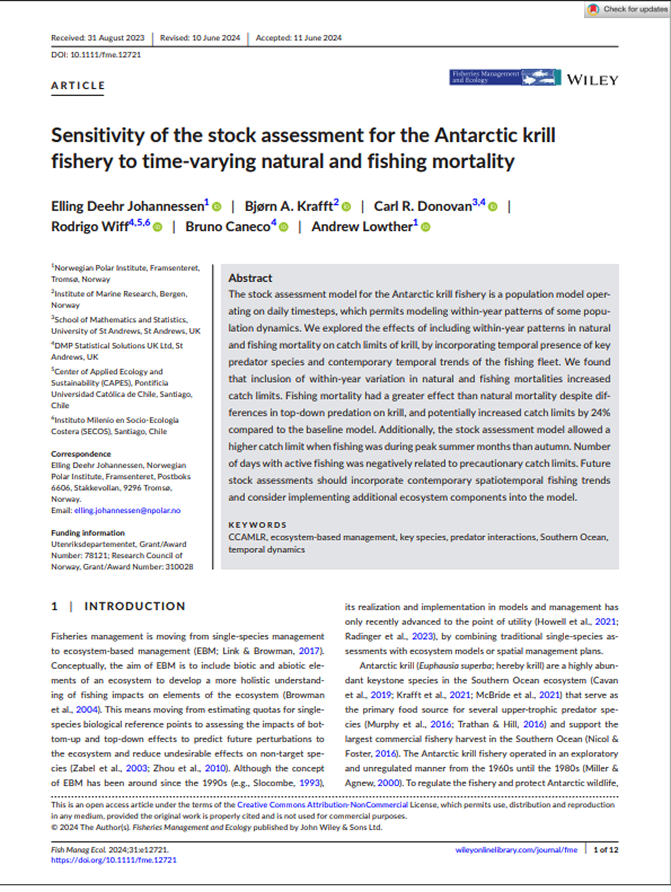Fisheries management
Antarctic ecosystem
Climate
Krill (Euphausia superba)
Multi-scale assessment of distribution and density of procellariiform seabirds within the Northern Antarctic Peninsula marine ecosystem
Summary
This study used ship-based surveys and specialized statistical models to assess the distribution and population density of 11 tube-nosed seabird species in the Northern Antarctic Peninsula marine ecosystem during summer months (2003-2011). The research revealed two distinct distribution patterns: open ocean species concentrated in the southern Drake Passage and coastal species around the Peninsula and South Shetland Islands. Ocean surface temperature and water depth were the most important environmental factors determining where seabirds were found. The models performed moderately to well for predicting presence or absence of species (accuracy scores 0.60-0.80) but were less effective at predicting detailed density variations. The study provides baseline distribution data essential for understanding potential impacts of climate change and human activities, particularly krill fishing, on Southern Ocean seabirds. The research highlights concerns about krill depletion affecting krill-dependent predators and establishes important habitat relationships for future conservation and management decisions.

1
This map shows the combined predicted density of all 11 procellariiform seabird species, with each species normalized and summed to identify overall hotspots. Warmer colors indicate higher combined density, cooler colors show lower density.Key Findings
1
Eleven tube-nosed seabird species were analyzed from 32,181 kilometers of ship surveys conducted between 2003-2011. 2
Two distinct distribution patterns were identified: oceanic species concentrated in the southern Drake Passage versus coastal species around the Peninsula and South Shetland Islands.3
Sea surface temperature and water depth were the most important environmental factors determining seabird distribution across all species.4
Models performed moderately to well for predicting species presence/absence (accuracy 0.60-0.80), but were less effective at predicting density variations.5
The study establishes baseline distribution data essential for monitoring ecosystem changes and assessing potential impacts from climate change and commercial krill fishing on Southern Ocean seabirds.

